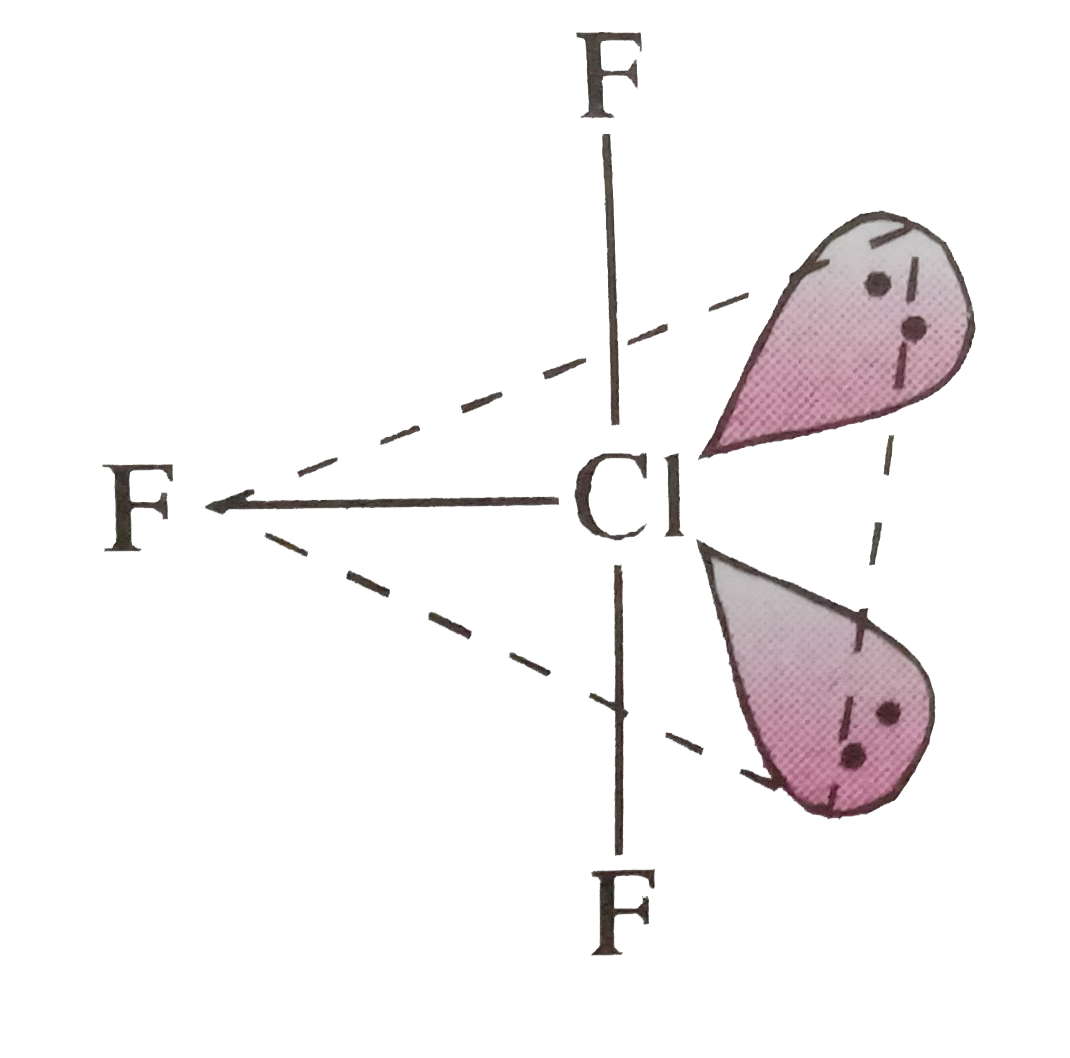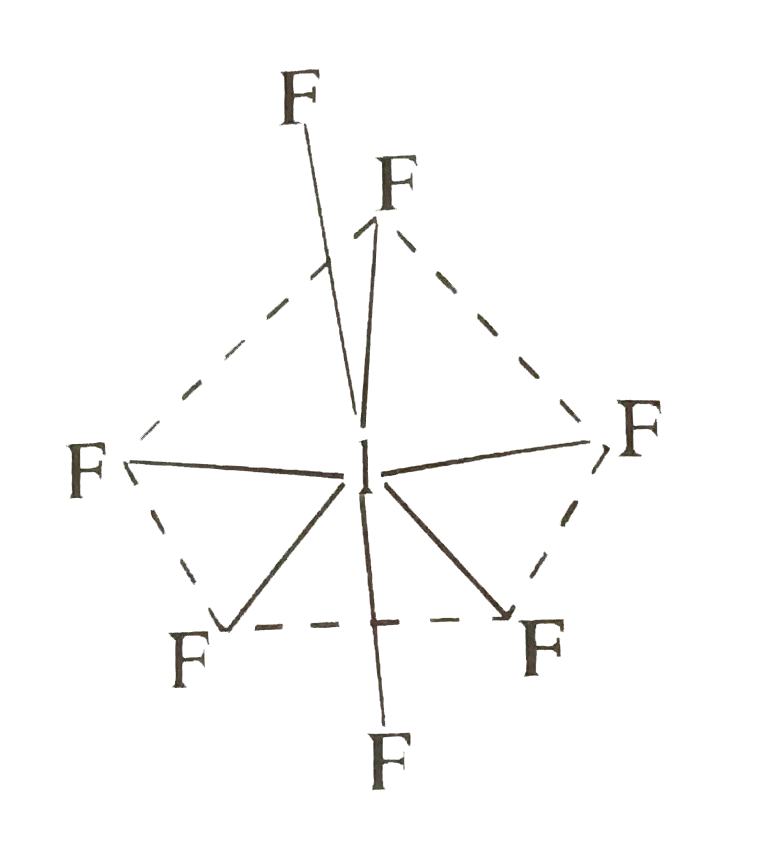On the basis of VSEPR theory, prefict the shapes of the following molecules ions :
(i)ClF3 (ii)BrF5 (iii)IF7 (iv)H3O+ion.
(i) Shape of CIF3 molecule. No of valence electrons on central Cl atom = 7
No. of F atoms linked by single covalent bonds =3
Total no. of electron pairs aroung Cl atom =7+32=5
Total no. of shared pairs =3
Number of lone pairs =5-3=2
The shape of the molecules is T-shaped. 
(ii) Shape of BrF5 molecule. No of valence electrons on central Br atom = 7
No. of F atoms linked by single covalent bonds = 5
Total no. of electron pairs around central Br atom =7+52=6
No. of shared pairs = 5
No. of lone pairs =6-5=1
The shape of the molecule is square pyramidal. 
(iii) Shape of IF7 molecule. No. of valence electrons on central I atom = 7
No of F atoms linked by single convalent bonds = 7
Total no. of electron pairs around central I atom =7+72=7
No. of shared pairs = 7
No. of lone pairs = 7 -7=zero
Shape of IF7 molecule is pentagonal bipyramidal. 
(iv) Shape of H3O+ ion. No of electrons on central O atom =6-1=5
No of H atoms linked by single covalent bonds =3
Total no. of electron pairs around central O atom =5+32=4
No, of shared pairs =3
No. of lone pairs =4-3=1
Shape of H3O+ ion is pyramidal. 
Topper's Solved these Questions
- CHEMICAL BONDING AND MOLECULAR STRUCTURE BOOK - DINESH PUBLICATIONCHAPTER - CHEMICAL BONDING AND MOLECULAR STRUCTURE EXERCISE - BORD EXAMINATIONS
84 Videos
- CHEMICAL BONDING AND MOLECULAR STRUCTURE BOOK - DINESH PUBLICATIONCHAPTER - CHEMICAL BONDING AND MOLECULAR STRUCTURE EXERCISE - ADDITIONAL IMPORTANT QUASTIONS
41 Videos
- CARBOXYLIC ACIDS AND THEIR DERIVATIVESBOOK - DINESH PUBLICATIONCHAPTER - CARBOXYLIC ACIDS AND THEIR DERIVATIVESEXERCISE - Unit test
20 Videos
- CLASSIFICATION OF ELEMENTS AND PERIODICITY IN PROPERTIESBOOK - DINESH PUBLICATIONCHAPTER - CLASSIFICATION OF ELEMENTS AND PERIODICITY IN PROPERTIESEXERCISE - All Questions
310 Videos
Similar Questions
On the basis of VSEPR theory, predict the shapes of the following molecules molecules /ions ?
(i)SiF4(ii)NH−2(iii)NH+4(iv)C2H2(v)H3O+(vi)F2O(vii)PCl3(viii)PF5.
View SolutionOn the basis of VSEPR theory, predict the shapes of the following :
(i)CIF3(ii)BrF5(iii)NH−2(iv)H3O+
View SolutionOn the basis of hydribidsation predict the shape of the following molecules
(i) CH3F
(ii) CH2=O
View SolutionDraw the shape of the following molecules:
(a)XeOF4
(b)BrF3
View SolutionOn the basis of VSEPR theory, predict the shapes of the following molecules/ions?
a. AsF5 , b. SbCl3 , c. F2O , d.H3O⊕
e. HC≡CH , f. ⊕NH4 , g. o−NH2 , h. GeF4
View SolutionOn the basis of type of hybridisation, predict the shape of the following molecules :
(i) H2C=O
(ii) CH3F
(iii) HC≡N
View Solutionusing VSEPR theory predict the probable structure of the following :
(i) N2O3
(ii) BrF3
View SolutionGive the shapes associated with the following molecules
(i)AB3(ii)Ab4(iii)AB5.
View SolutionDiscuss the shapes of the following molecules of the basis of VSEPR theory :
(i) CH4
(ii) PF5
(iii) NH3
(iv) H2O
(v) SF6.
View SolutionDraw the structure of the following molecules
(i) H3PO2(ii)H2S2O7(iii)XeOF4.
View Solution
